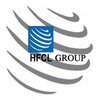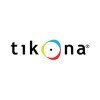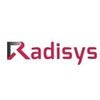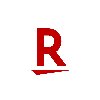Filter interviews by
STL Training Interview Questions and Answers
8 Interview questions
Chiller troubleshooting involves identifying and resolving issues with the chiller system to ensure proper functioning.
Check for power supply to the chiller unit
Inspect for any leaks in the system
Monitor the temperature and pressure readings
Clean or replace filters regularly
Verify proper refrigerant levels
Look for any unusual noises or vibrations
There are 4 mandatory headers in SIP (Session Initiation Protocol).
The mandatory headers in SIP are: From, To, Call-ID, and CSeq.
The From header identifies the sender of the SIP request.
The To header identifies the intended recipient of the SIP request.
The Call-ID header uniquely identifies a SIP call.
The CSeq header specifies the sequence number of the SIP request within a call.
Deployment process refers to the steps and procedures involved in releasing and installing software applications or updates.
Deployment process involves planning, testing, and executing the release of software applications or updates.
It includes activities like creating deployment packages, configuring environments, and deploying the software.
Deployment process may also involve rollback procedures in case of issues...
I expect STL to provide reliable and efficient solutions for field engineering challenges.
Timely delivery of required equipment and materials
Expertise in handling complex engineering projects
Effective communication and collaboration with field engineers
Adherence to safety standards and regulations
Flexibility to adapt to changing project requirements
Pump flow and piping design are crucial for efficient operation and performance in industrial settings.
Consider the required flow rate and pressure for the system
Select a pump that can meet the flow and pressure requirements
Design the piping layout to minimize friction losses and optimize flow
Ensure proper sizing of pipes and fittings to prevent restrictions
Consider factors like material compatibility, temperature...
Cooling towers are heat removal devices used to transfer process waste heat to the atmosphere.
Cooling towers work by evaporating a small portion of the water to remove heat from the rest of the water.
Hot water from the process is pumped to the top of the cooling tower and distributed over the fill material.
As the water flows over the fill material, it is exposed to air, which causes some of it to evaporate and coo...
Air compressor capacity calculation involves determining the required flow rate and pressure for the application.
Calculate the required flow rate in cubic feet per minute (CFM) based on the air tools or equipment being used.
Determine the required pressure in pounds per square inch (PSI) for the application.
Use the formula: CFM = (Tool SCFM x Number of Tools) + (Leakage SCFM) + (Pressure Drop SCFM)
Consider factors ...
The question is unclear and lacks context.
Please provide more information or clarify the question.
It is difficult to provide a meaningful answer without understanding the context.
Can you please rephrase the question or provide more details?
STL Training Interview Experiences
13 interviews found

(3 Questions)
- Q1. Computer hardware and Network
- Q2. System Update and network printer install
- Q3. RAM Update and RJ45 LAN Reconected
(1 Question)
- Q1. Computer Hardware
I applied via Naukri.com and was interviewed in Jul 2024. There was 1 interview round.
(1 Question)
- Q1. Tell Me About Your Self
- Ans.
I am a dedicated and experienced Network Support Engineer with a strong background in troubleshooting and resolving network issues.
Over 5 years of experience in providing network support for various organizations
Proficient in configuring and maintaining network devices such as routers, switches, and firewalls
Skilled in diagnosing and resolving network connectivity issues
Certified in Cisco CCNA and CompTIA Network+
Stron...
I applied via Naukri.com and was interviewed in Sep 2023. There were 2 interview rounds.

(5 Questions)
- Q1. Tell about Chiller troubleshooting
- Ans.
Chiller troubleshooting involves identifying and resolving issues with the chiller system to ensure proper functioning.
Check for power supply to the chiller unit
Inspect for any leaks in the system
Monitor the temperature and pressure readings
Clean or replace filters regularly
Verify proper refrigerant levels
Look for any unusual noises or vibrations
- Q2. Air Compressor capacity calculation
- Ans.
Air compressor capacity calculation involves determining the required flow rate and pressure for the application.
Calculate the required flow rate in cubic feet per minute (CFM) based on the air tools or equipment being used.
Determine the required pressure in pounds per square inch (PSI) for the application.
Use the formula: CFM = (Tool SCFM x Number of Tools) + (Leakage SCFM) + (Pressure Drop SCFM)
Consider factors such ...
- Q3. Pump flow and piping design
- Ans.
Pump flow and piping design are crucial for efficient operation and performance in industrial settings.
Consider the required flow rate and pressure for the system
Select a pump that can meet the flow and pressure requirements
Design the piping layout to minimize friction losses and optimize flow
Ensure proper sizing of pipes and fittings to prevent restrictions
Consider factors like material compatibility, temperature, and...
- Q4. Ahu CFM calculation
- Q5. Cooling tower working process
- Ans.
Cooling towers are heat removal devices used to transfer process waste heat to the atmosphere.
Cooling towers work by evaporating a small portion of the water to remove heat from the rest of the water.
Hot water from the process is pumped to the top of the cooling tower and distributed over the fill material.
As the water flows over the fill material, it is exposed to air, which causes some of it to evaporate and cool dow...
Interview Preparation Tips
- Auto Cadd
I applied via Company Website and was interviewed in Mar 2023. There were 2 interview rounds.

(4 Questions)
- Q1. All culture, Your and your life, family, college, information
- Q2. Company knowledge
- Q3. Technical skills knowledge
- Q4. Enjoyable work for company
Interview Preparation Tips
I applied via Recruitment Consulltant and was interviewed before May 2023. There was 1 interview round.
(1 Question)
- Q1. Why do you want to join stl
Interview Preparation Tips
I applied via Campus Placement

(2 Questions)
- Q1. About internship and project
- Q2. About your strong subject
Interview Preparation Tips
and your ability and work experience.
I appeared for an interview before Aug 2020, where I was asked the following questions.
- Q1. Technical challenge faced during working on any projects
- Q2. Multi threading related questions
I applied via Naukri.com and was interviewed in May 2022. There were 2 interview rounds.
(2 Questions)
- Q1. What is deployment process??
- Ans.
Deployment process refers to the steps and procedures involved in releasing and installing software applications or updates.
Deployment process involves planning, testing, and executing the release of software applications or updates.
It includes activities like creating deployment packages, configuring environments, and deploying the software.
Deployment process may also involve rollback procedures in case of issues or f...
- Q2. How many mandatory headers in sip
- Ans.
There are 4 mandatory headers in SIP (Session Initiation Protocol).
The mandatory headers in SIP are: From, To, Call-ID, and CSeq.
The From header identifies the sender of the SIP request.
The To header identifies the intended recipient of the SIP request.
The Call-ID header uniquely identifies a SIP call.
The CSeq header specifies the sequence number of the SIP request within a call.
(1 Question)
- Q1. 1st round is incomplete
Interview Preparation Tips
Skills evaluated in this interview
I applied via Company Website and was interviewed before Jun 2022. There were 4 interview rounds.

Array based question
(1 Question)
- Q1. Basics question related to python , html , css and SQL
(1 Question)
- Q1. Introduction and Project explanation
I applied via Naukri.com and was interviewed before Mar 2022. There were 3 interview rounds.

(2 Questions)
- Q1. Experience related question, salary and location
- Q2. CTC Discussion location allocation
(2 Questions)
- Q1. Department related questions
- Q2. Output requirements team management vendor management question
Interview Preparation Tips
- OFC
- Fiber
- Fiber Splicing
Top trending discussions






STL Training Interview FAQs
The duration of STL Training interview process can vary, but typically it takes about less than 2 weeks to complete.
Tell us how to improve this page.
STL Training Interviews By Designations
- STL Training Field Engineer Interview Questions
- STL Training Senior Associate Interview Questions
- STL Training Technical Lead Interview Questions
- STL Training Network Support Engineer Interview Questions
- STL Training Graduate Trainee Interview Questions
- STL Training Graduate Engineer Trainee (Get) Interview Questions
- STL Training IT Engineer Interview Questions
- STL Training Deployment Engineer Interview Questions
- Show more
Interview Questions for Popular Designations
Overall Interview Experience Rating
based on 10 interview experiences
Difficulty level
Duration
Interview Questions from Similar Companies
STL Training Reviews and Ratings
based on 73 reviews
Rating in categories
|
Software Engineer
12
salaries
| ₹4.3 L/yr - ₹9 L/yr |
|
Field Engineer
12
salaries
| ₹3.5 L/yr - ₹5.3 L/yr |
|
Technical Lead
8
salaries
| ₹21.6 L/yr - ₹30.7 L/yr |
|
Production Engineer
7
salaries
| ₹1.6 L/yr - ₹4 L/yr |
|
Process Associate
6
salaries
| ₹2.8 L/yr - ₹4.1 L/yr |

Tata Communications Transformation Services

HFCL Limited

Tikona Infinet

Excitel Broadband
- Home >
- Interviews >
- STL Training Interview Questions














